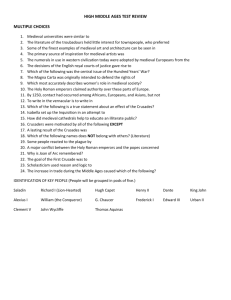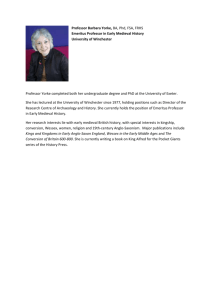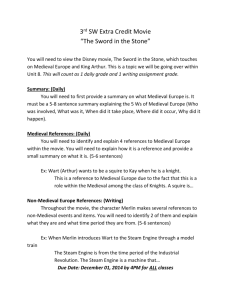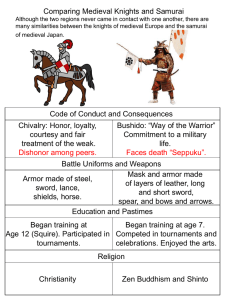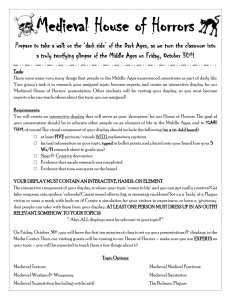VII social
advertisement
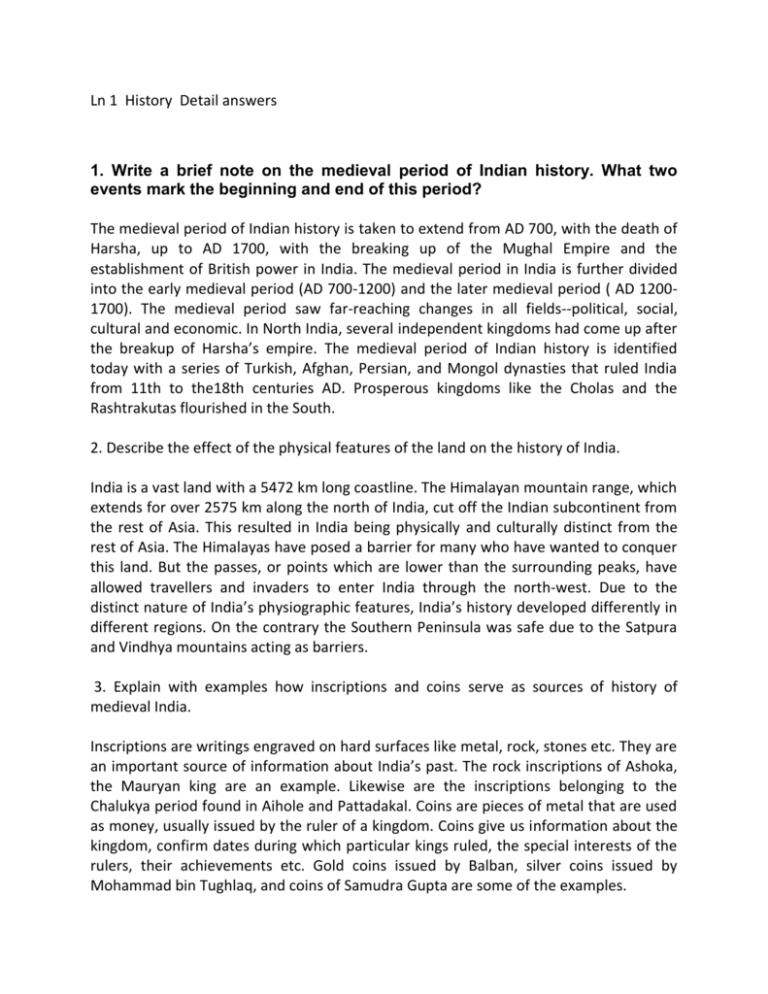
Ln 1 History Detail answers 1. Write a brief note on the medieval period of Indian history. What two events mark the beginning and end of this period? The medieval period of Indian history is taken to extend from AD 700, with the death of Harsha, up to AD 1700, with the breaking up of the Mughal Empire and the establishment of British power in India. The medieval period in India is further divided into the early medieval period (AD 700-1200) and the later medieval period ( AD 12001700). The medieval period saw far-reaching changes in all fields--political, social, cultural and economic. In North India, several independent kingdoms had come up after the breakup of Harsha’s empire. The medieval period of Indian history is identified today with a series of Turkish, Afghan, Persian, and Mongol dynasties that ruled India from 11th to the18th centuries AD. Prosperous kingdoms like the Cholas and the Rashtrakutas flourished in the South. 2. Describe the effect of the physical features of the land on the history of India. India is a vast land with a 5472 km long coastline. The Himalayan mountain range, which extends for over 2575 km along the north of India, cut off the Indian subcontinent from the rest of Asia. This resulted in India being physically and culturally distinct from the rest of Asia. The Himalayas have posed a barrier for many who have wanted to conquer this land. But the passes, or points which are lower than the surrounding peaks, have allowed travellers and invaders to enter India through the north-west. Due to the distinct nature of India’s physiographic features, India’s history developed differently in different regions. On the contrary the Southern Peninsula was safe due to the Satpura and Vindhya mountains acting as barriers. 3. Explain with examples how inscriptions and coins serve as sources of history of medieval India. Inscriptions are writings engraved on hard surfaces like metal, rock, stones etc. They are an important source of information about India’s past. The rock inscriptions of Ashoka, the Mauryan king are an example. Likewise are the inscriptions belonging to the Chalukya period found in Aihole and Pattadakal. Coins are pieces of metal that are used as money, usually issued by the ruler of a kingdom. Coins give us information about the kingdom, confirm dates during which particular kings ruled, the special interests of the rulers, their achievements etc. Gold coins issued by Balban, silver coins issued by Mohammad bin Tughlaq, and coins of Samudra Gupta are some of the examples. 4. Explain in detail how monuments and buildings are useful sources of information on medieval India. Monuments and buildings often provide information about the period during which they were built. Temples, palaces and mosques can tell us not only of religious practices but also about the political, economic and social conditions of the time. Mosques like Jama Masjid in Delhi, forts like those at Delhi, Gwalior, Agra and Mandu tell us about the style of architecture followed at that time. 5. How do books and other written manuscripts help us understand the history of medieval India?Give examples to support your answer. Books and other written manuscripts are rich sources of information that help us understand medieval history. They consist of historical writings, biographies, plays, novels and epics, and include both indigenous sources (by local writers) and foreign sources (by foreign travellers). Some biographies like Rajatarangini by Kalhana describe the lives and achievements of kings. Prithviraj Raso by Chand Bardai gives an account of the life of the famous Rajput ruler Prithviraj Chauhan. Foreign travellers like Ibn Batuta, Marco Polo etc., have written interesting accounts of the social customs and culture of India. After a careful study of these sources, historians have tried to recreate the history of medieval India.



